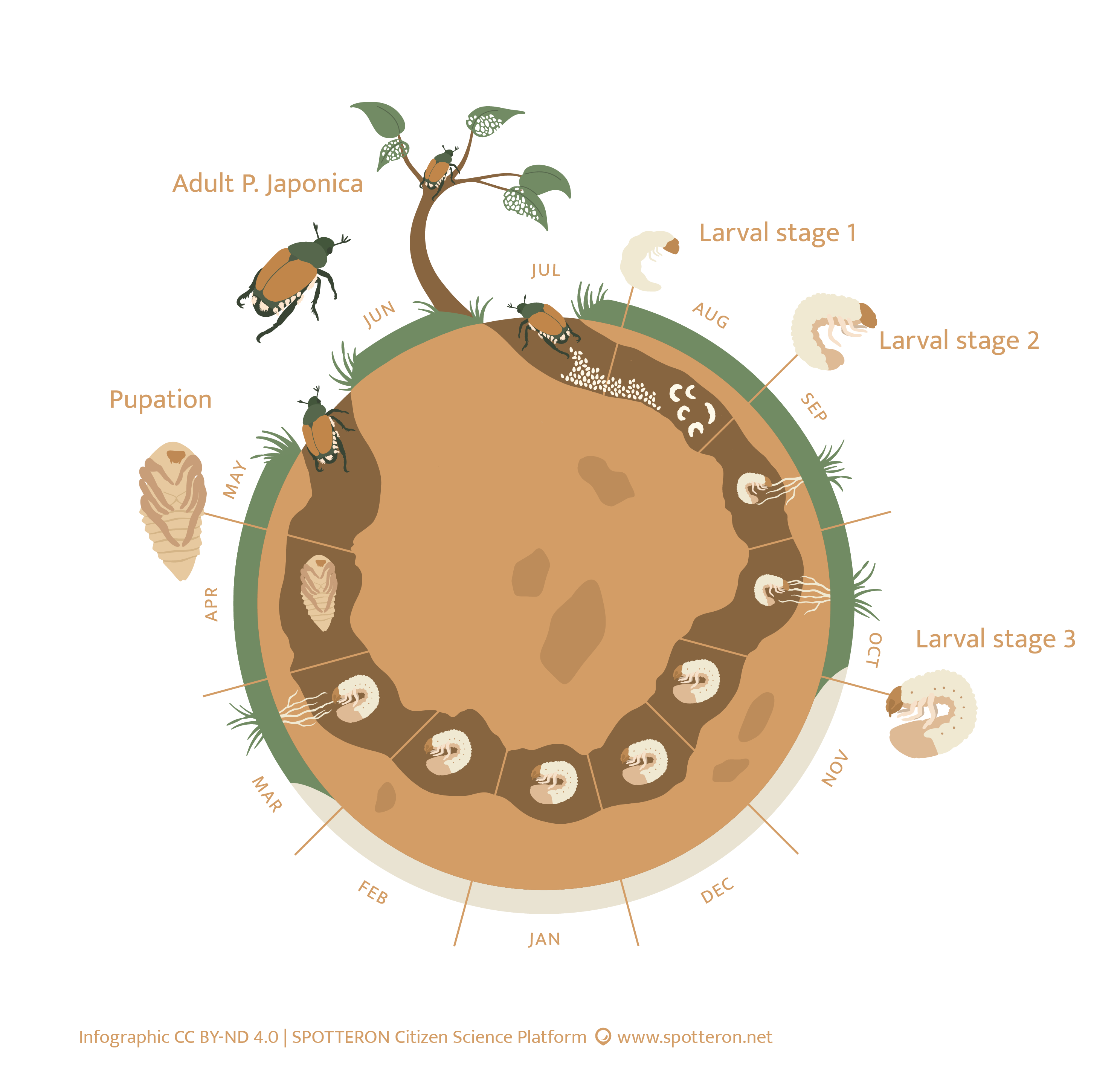Depending on the adult swarming period, first instar larvae hatch from their eggs beginning in the second half of July. They feed on fine roots and organic matter and become real root-damaging “pest species” only later in their development. The first larval stage is usually short, but second and third instar larvae may occur simultaneously for several weeks from September until November.

With declining soil temperatures in late autumn, P. japonica larvae stop feeding in late autumn (October, November) and usually overwinter in their third stage in the soil in about 10 to 15cm depth. As soil temperatures rise in early spring (February, March), they move closer to the surface and start to feed on roots again.
Pupation occurs in a small, earthen cell after a few weeks of feeding in springtime. The adult beetles hatch after a short pupal phase and emerge from the soil from Mid-May to Mid-July, depending on latitude.
